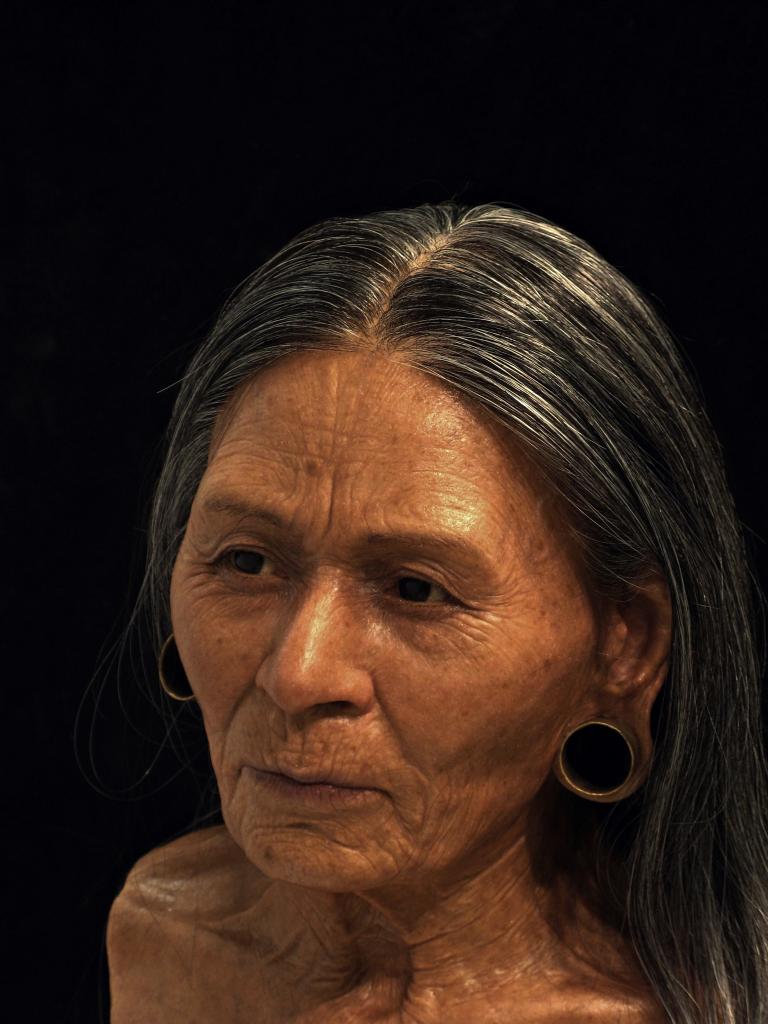Facial Recreation Done for 1,200-year-old Peruvian Noblewoman
December 17, 2017
After 1,200 years and more than 200 hours of painstaking recreation, archaeologists now know what a long-dead Peruvian noblewoman looked like.
The woman they termed the Huarmey Queen was in her own private chamber, which contained jewelry, a silver goblet, a ceremonial axe, golden weaving tools, and a host of other luxury items. The royal women were part of the Wari (Huari) culture, who flourished in the area for 600 years, from abtou A.D. 500 to A.D. 1000. Other Wari ruins have been found at Cerro Baul, Chiclayo, Pikillaqta, and Wari (the capital). Another clue that these were royal women was that archaeologists found evidence of teeth missing consistent with decay due to the regular consumption of a sugary, corn-based drink called chicha, which only the Wari elite could drink. As well, unearthed along with the tomb was a canal leading from the queen's tomb to the associated outside chambers and in the tomb was found chicha residue. Nillson made close study of the facial skeleton, which was very much intact, and then relied both on estimates of flesh and muscle thickness and photographs of modern people living in the area. After 220 hours of detailed focus, Nillson was finished and the Huarmey Queen gazed out again at the world. The finished reconstruction is now on display at the National Ethnographic Museum in Warsaw, Poland, as part of an exhibition of Peruvian artifacts. |
|
Social Studies for Kids
copyright 2002–2019
David White



 The woman was found along with 57 other noblewomen, among them four queens or princesses, in an undisturbed tomb now called El Castille de Huarmey, near the coastal town of Huarmey, nearly 300 miles northwest of Lima. Archaeologists Roberto Pimentel Nita and Milosz Giersz discovered the tomb.
The woman was found along with 57 other noblewomen, among them four queens or princesses, in an undisturbed tomb now called El Castille de Huarmey, near the coastal town of Huarmey, nearly 300 miles northwest of Lima. Archaeologists Roberto Pimentel Nita and Milosz Giersz discovered the tomb. What the queen looked like became the focal point for Giresz and the ultimate sculptor, archaeologist Oscar Nilsson, a well-known restorer of ancient visages. He has done similar reconstructions in England (of the "Stonehenge Man") and in his native Sweden.
What the queen looked like became the focal point for Giresz and the ultimate sculptor, archaeologist Oscar Nilsson, a well-known restorer of ancient visages. He has done similar reconstructions in England (of the "Stonehenge Man") and in his native Sweden.
